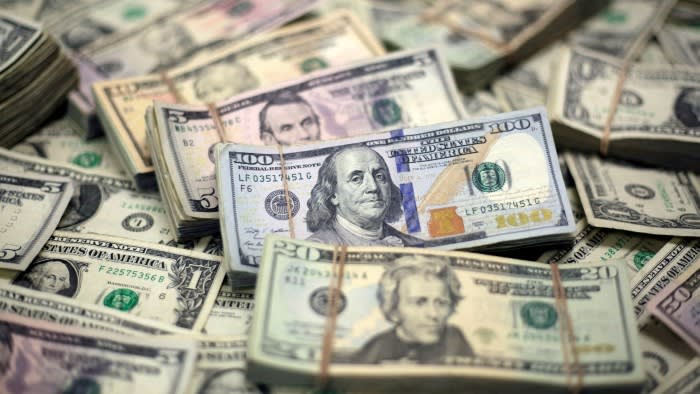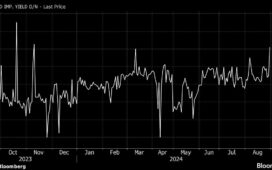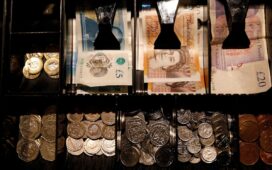Unlock the Editor’s Digest for free
Roula Khalaf, Editor of the FT, selects her favourite stories in this weekly newsletter.
The dollar hit its lowest level since the start of the year on Tuesday, as investors braced for the Federal Reserve to start lowering interest rates and the August sell-off that spooked markets faded.
The US currency has fallen 2.2 per cent against a basket of rival currencies this month — back to a level not seen since the first trading day of January — as investors expect the US central bank to cut rates next month.
The weaker greenback comes as the S&P 500 stock index has recovered nearly all of its losses from early August following a weak US jobs report and fears of an imminent recession. Since then, calmer markets and more durable economic data have pushed investors back into “risky” assets.
“The market is looking for a soft landing and Fed rate cuts . . . which is negative for the dollar,” said Athanasios Vamvakidis, head of G10 foreign exchange strategy at Bank of America.
Investors are now looking to a much-anticipated speech by Fed chair Jay Powell at the Jackson Hole symposium on Friday, when he is expected to lay clues on the road ahead for US interest rates.
Markets are pricing in three or four quarter-point Fed rate cuts by the end of the year after strong retail sales figures restored confidence that an imminent recession would be avoided. Traders had rushed to price closer to five cuts this year after the soft jobs report.
Vamvakidis added that strong consumer spending, combined with optimism that the Fed would still deliver multiple rate cuts this year, was “good for risk sentiment” but not for the dollar because “the US currency is still overvalued”.

The dollar’s decline comes after it gained 4.4 per cent in the first half of the year, as the resilience of the US economy surprised investors who had expected more than six quarter-point cuts in 2024 at the start of the year.
But Citi’s US data change index indicated from late June that US economic growth was slowing faster than that of other advanced economies compared with the past year.
Since then, dollar weakness has gathered pace. Citi said its hedge fund clients had been consistent net US dollar sellers since August 7 as risk appetite has recovered. The bank’s US dollar positioning indicator is currently the most bearish it has been since May 2021.
“We have pencilled in a mild recession for the US — the economy is certainly slowing and converging with other countries,” said Jane Foley, head of foreign exchange at Rabobank.
She added that the euro — the greenback’s biggest rival — had been “really resilient” in rising 3 per cent against the dollar since early July despite weak German manufacturing and a slowdown in demand from China.
Dollar declines have been boosted by an unwinding of the popular “carry trades”, in which investors borrowed yen to fund the purchase of higher-yielding dollars, which has pushed the Japanese currency up 7 per cent against the greenback over the past month.
Bets against the yen had reached their most extreme level since 2007 last month, according to data from the US Commodity Futures Trading Commission, but have unravelled sharply in recent weeks and tipped to a long position last week for the first time since 2001.
“Positioning on the dollar has moved to flat but is nowhere near extended — now the question for the rest of the year is: do you want to go short the dollar?” said Chris Turner, head of research at ING.
State Street, one of the world’s largest custodian banks, said asset managers had swung between very positive sentiment on the dollar to neutral over the past two years and were still comfortably above neutral despite reaching their lowest level since April.
“The US dollar view is yet to fully pivot, and may not until we get a clearer line of sight into the pace and depth of the Fed’s easing cycle,” said Michael Metcalfe, head of global macro strategy at State Street.





